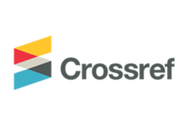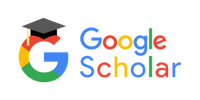Understanding Digital Natives Learning Experience through Japanese Language Exam at Nihongo Tesuto Bunkasai Competition by PGBJ Jabodetabek in 2023
DOI:
https://doi.org/10.18196/jjlel.v8i1.20986Keywords:
application exam, digital natives, educational theory, generation of digital learning, shiguruAbstract
Integrating technology into Japanese language education has revolutionized the methods of instruction and learning. Especially while instructing the present generation known as digital natives. Educational institutions need to incorporate technology as a tool for teaching and learning due to the close relationship between digital natives and technology. This research aims to assess the utilization of the web-based test (SHIGURU) during the 2023 Bunkasai events organized by PGBJ-SMK (Forum of Japanese Language Teachers for Vocational High Schools) within the area of Jabodetabek (Jakarta, Bogor, Depok, Tangerang, Bekasi). This study employs a descriptive research methodology that incorporates both quantitative and qualitative approaches. Data can be collected through direct observation, questionnaires, and interviews. The study utilized primary and secondary data sources, which were examined through triangulation procedures. This study examines the benefits and drawbacks of utilizing shiguru and delves into a comprehensive comprehension of how the digital generation acquires knowledge and how Japanese language education should incorporate pedagogical principles and practices to cater to the requirements of digital natives in contemporary Japanese language education.
References
Dharma, L. H. (2014). Brain-based teaching: Merancang kegiatan belajar mengajar yang melibatkan otak, emosional, sosial, kognitif, kinestik, dan reflektif. Bandung: Kaifa
Hameed, S., Mellor, J., Badii, A., Patel, N., & Cullen, A. (2007). Factors mediating the routinisation of e-learning within a traditional university education environment. International Journal of Electronic Business (IJEB), 5(2), 160-175. https://doi.org/10.1504/IJEB.2007.012971
Harris, K. R., & Graham, S. (1999). Making the writing process work. New York: Brookline Books
Jobrack, B. (2013). The 5E instructional model: Engage explore explain evaluate extend from science, technology, engineering and mathematics. Retrieved from https://www.mnheonline.com/secondaryscience.pdf at 27 May 2023
Kivunja, C. (2014). Theoretical perspectives of how digital natives learn. International Journal of Higher Education, 3(1), 94-109. https://doi.org/10.5430/ijhe.v3n1p94
Miles, M. B., & Huberman, A. M. (2009). Analisis data kualitatif buku sumber tentang metode baru. Universitas Indonesia PRESS
Prenksy, M. (2001). Digital natives, Digital Immigrants. In The Horizon, 9(5), 1-6. Retrieved from https://marcprensky.com/writing/Prensky%20-%20Digital%20Natives,%20Digital%20Immigrants%20-%20Part1.pdf at 27 May 2023
Prenksy, M. (2006). Don’t bother Me, mom, I’m learning: How computer and video games are preparing your kid’s for 21st century success and how you can help. St. Paul: Paragon House
Prenksy, M. (2010). Teaching digital natives: Partnering for real learning. London: Corwin
Prenksy, M. (2012). From digital natives to digital wisdom: Hopeful essays for 21st century learning. London: Corwin
Tapscoot, D. (2009). Grown up digital: How the net generation is changing your world. New York: McGraw-Hill
Downloads
Published
How to Cite
Issue
Section
License
Copyright
Authors retain copyright and grant the journal right of first publication with the work simultaneously licensed under a Creative Commons Attribution-ShareAlike 4.0 International License that allows others to share the work with an acknowledgment of initial publication in this journal.
Authors are permitted and encouraged to post their work online (e.g., in institutional repositories, social media account, or on their website) after the article getting published in the journal, as it can lead to productive exchanges and earlier and greater citation of published work (See The Effect of Open Access).License
You are free to:
- Share — copy and redistribute the material in any medium or format
- Adapt — remix, transform, and build upon the material for any purpose, even commercially.
Attribution — You must give appropriate credit, provide a link to the license, and indicate if changes were made. You may do so in any reasonable manner, but not in any way that suggests the licensor endorses you or your use.
ShareAlike — If you remix, transform, or build upon the material, you must distribute your contributions under the same license as the original.
- No additional restrictions — You may not apply legal terms or technological measures that legally restrict others from doing anything the license permits.





